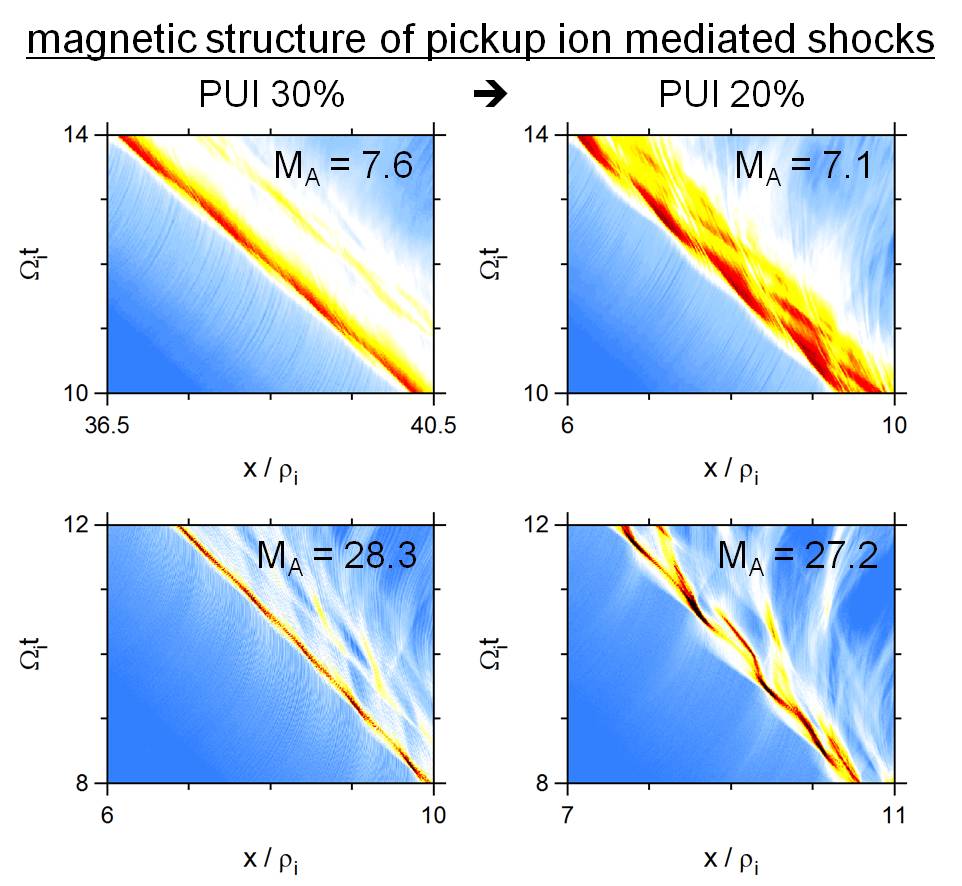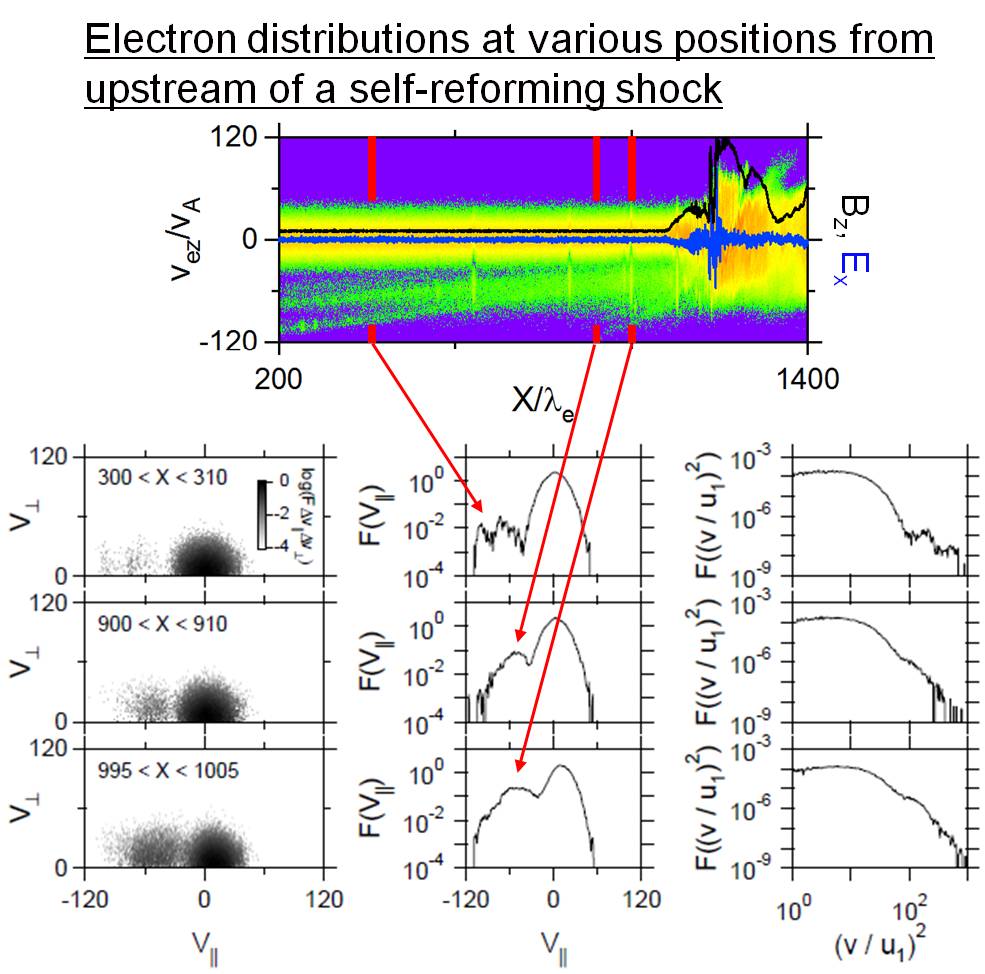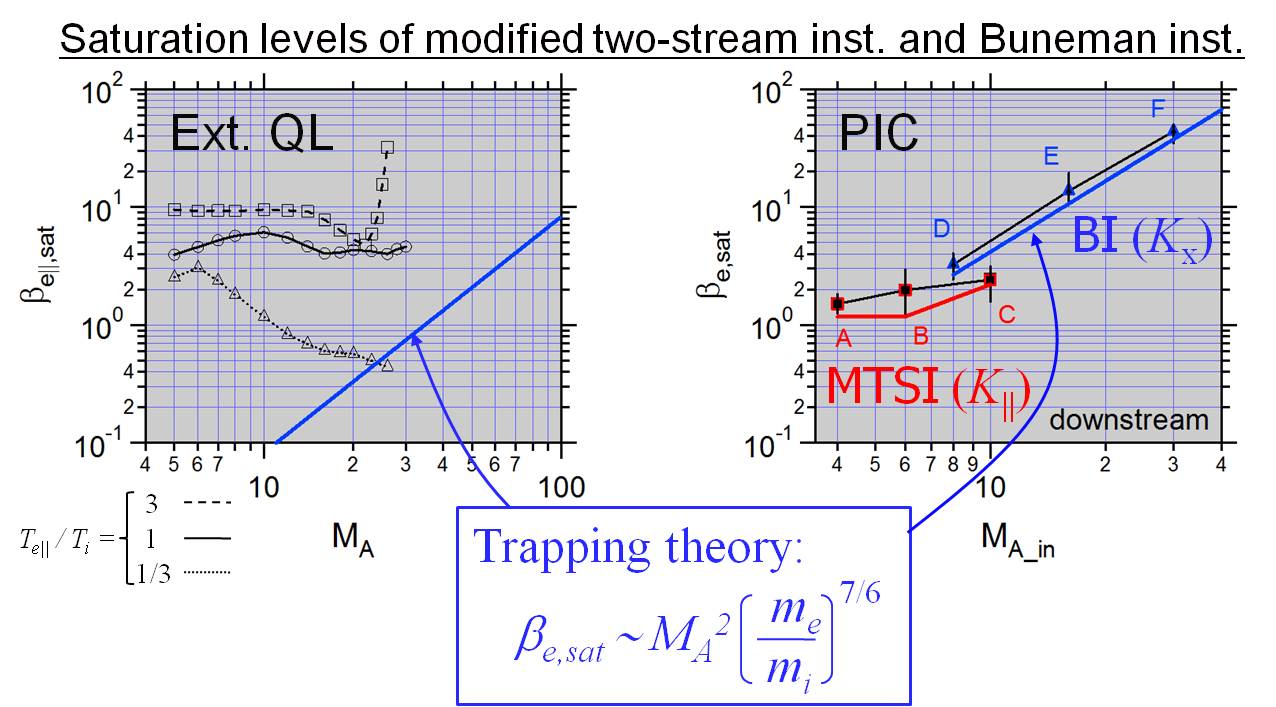Physics of collisionless shocks and particle acceleration
Micro- to Meso-scale structure of heliospheric termination shock and particle acceleration
Cosmic ray energy spectrum observed on the earth has a local peak at several tens of MeV. The corresponding particles are called anomalous cosmic rays (ACRs) and had been believed to get accerelated at the heliospheric termination shock. However, Voyager spacecraft did not observe ACRs accelerated at the termination shock. The reason for this is still an open question.

This research is supported by a Grant-in-Aid for Scientific Research (C) 25400479 from JSPS.
Numerical experiment aimed at observational positive research of high Mach number nonstationary shocks
One of the striking features of high Mach number collisionless shocks is the so-called self-reformation. The self-reformation was found and has been studied by means of numerical simulations. Here, we discussed how this phenomenon should be observed by spacecraft.

This research was supported by a Grant-in-Aid for Young Scientists (B) 22740323 from JSPS.
Microinstabilities as a dissipation mechanism of high Mach number collisionless shocks
Microinstabilities are believed to become important as a dissipation mechanism of a collisionless shock when Mach number of the shock is high enough. The effects of microinstabilities to plasma heating as a function of Mach number were evaluated for a number of possible instabilities.

This research was supported by a Grant-in-Aid for Young Scientists (B) 19740304 from JSPS.